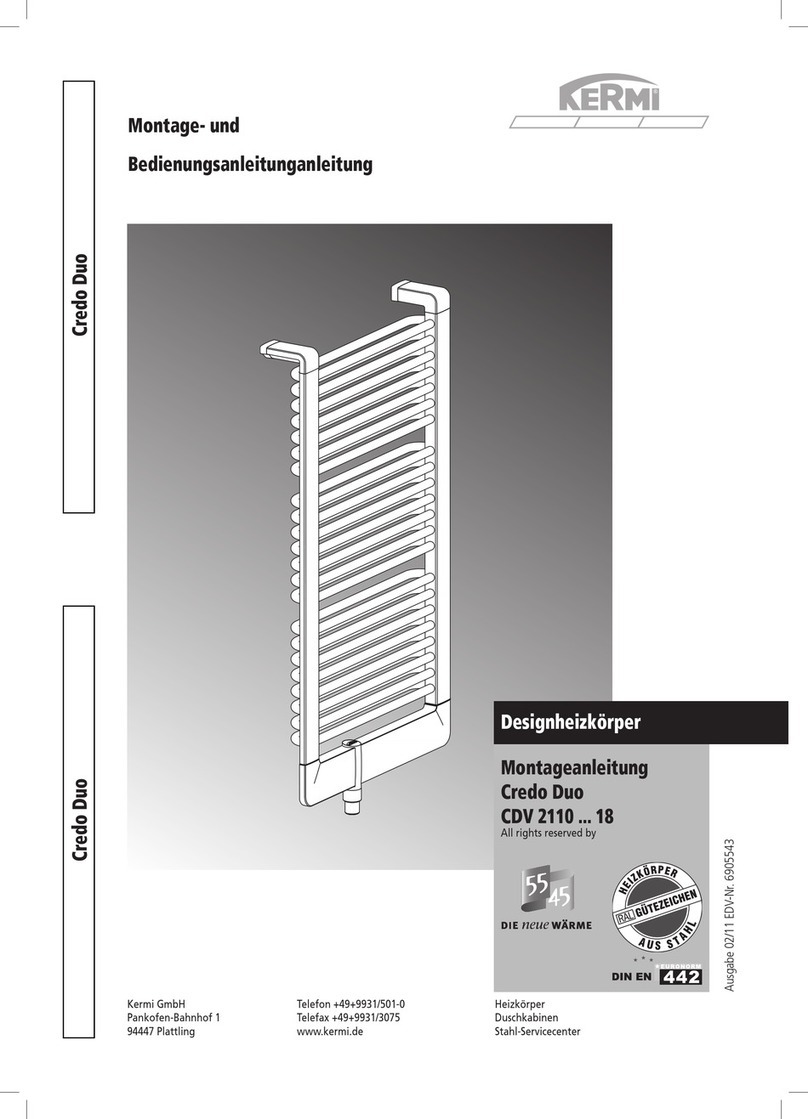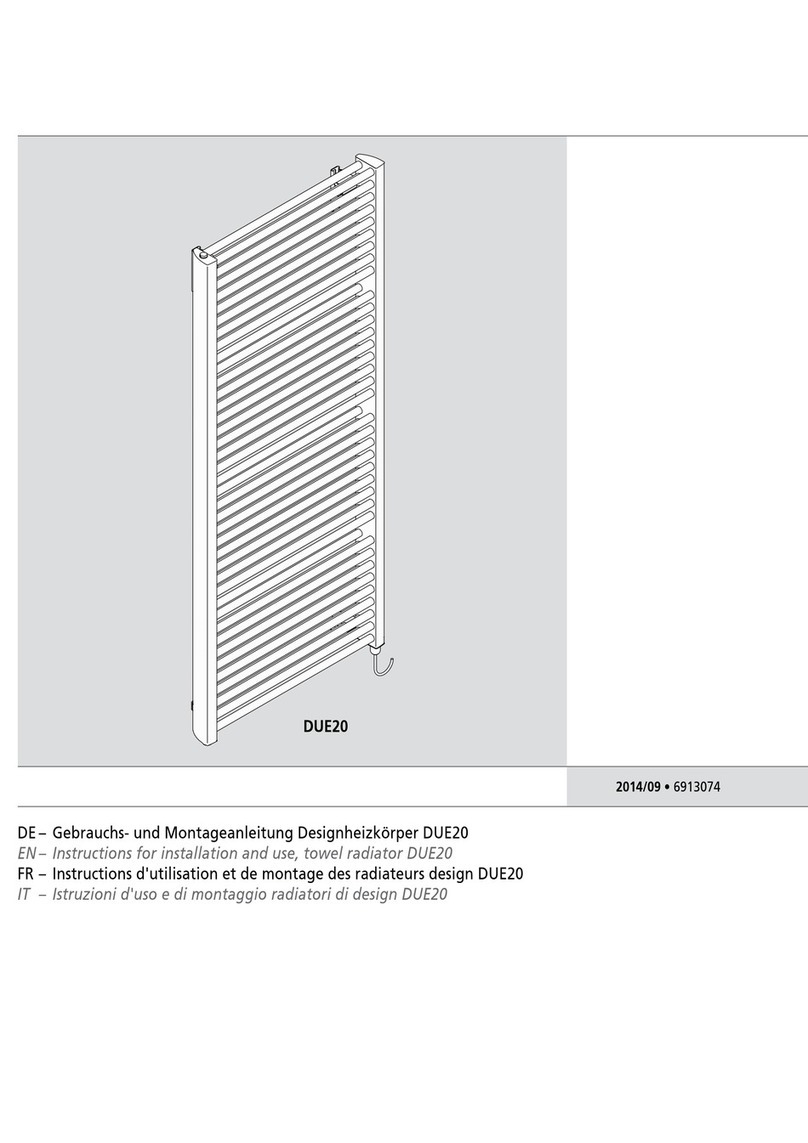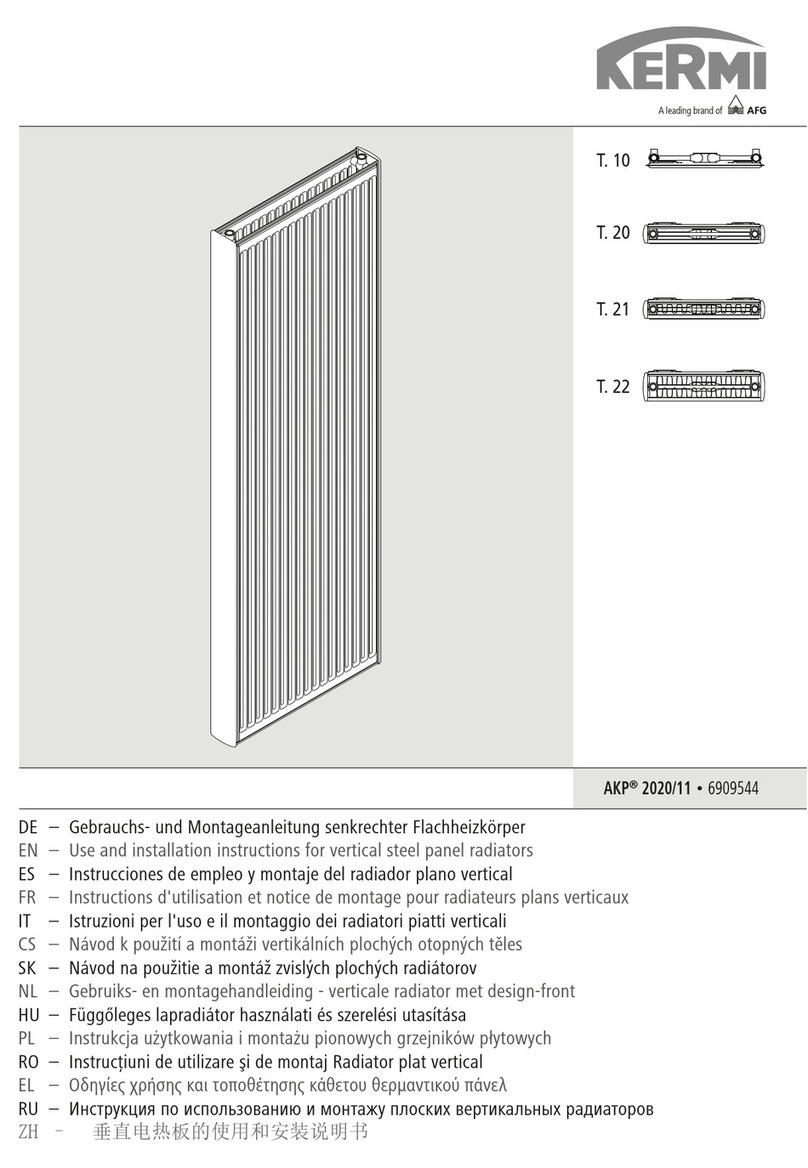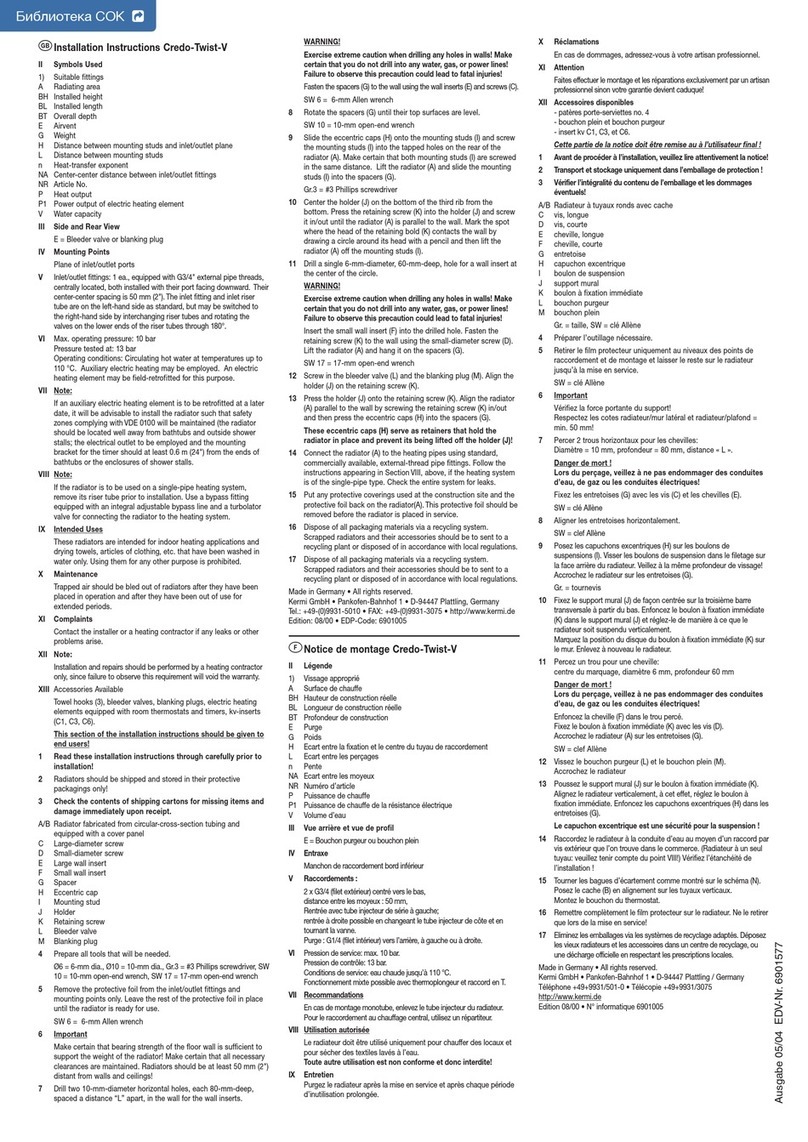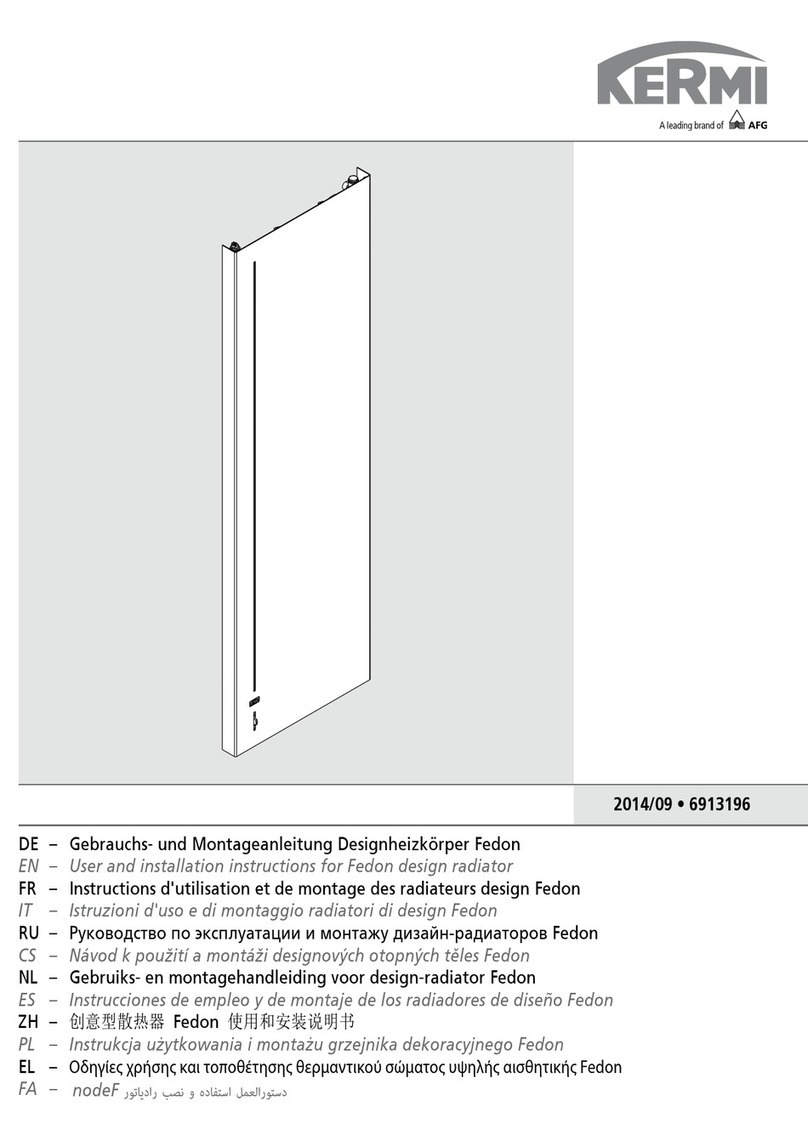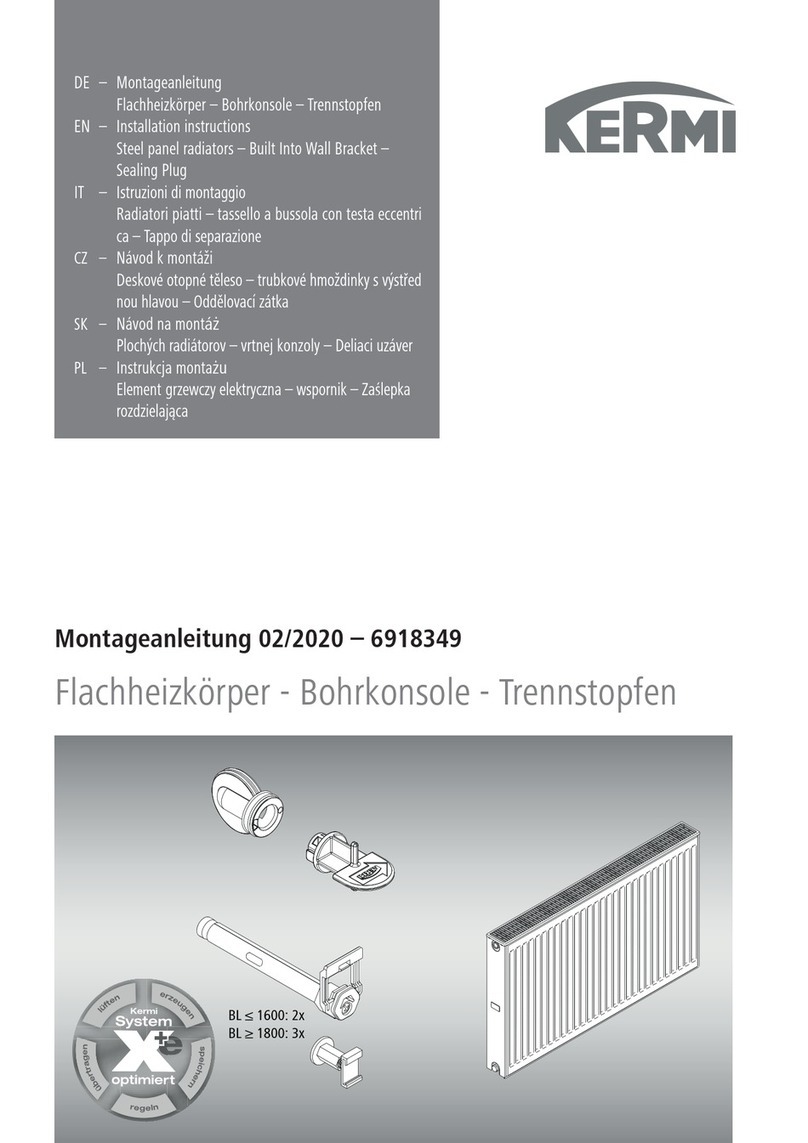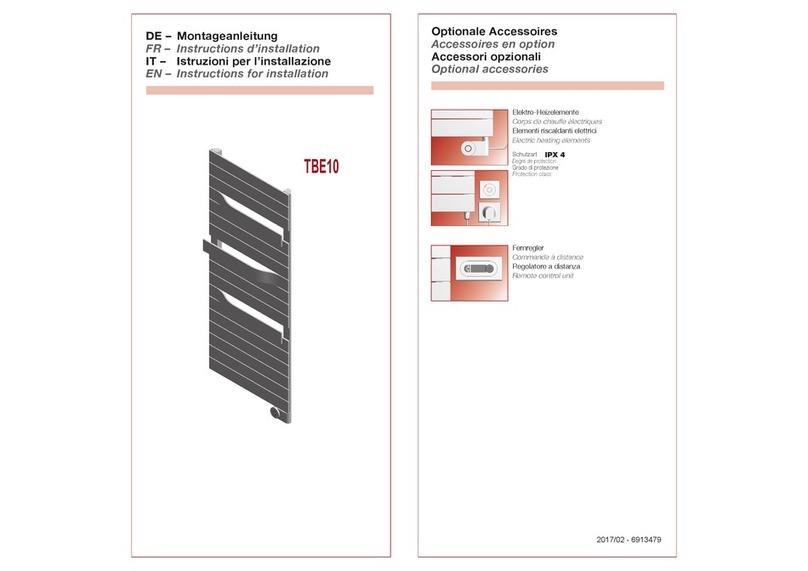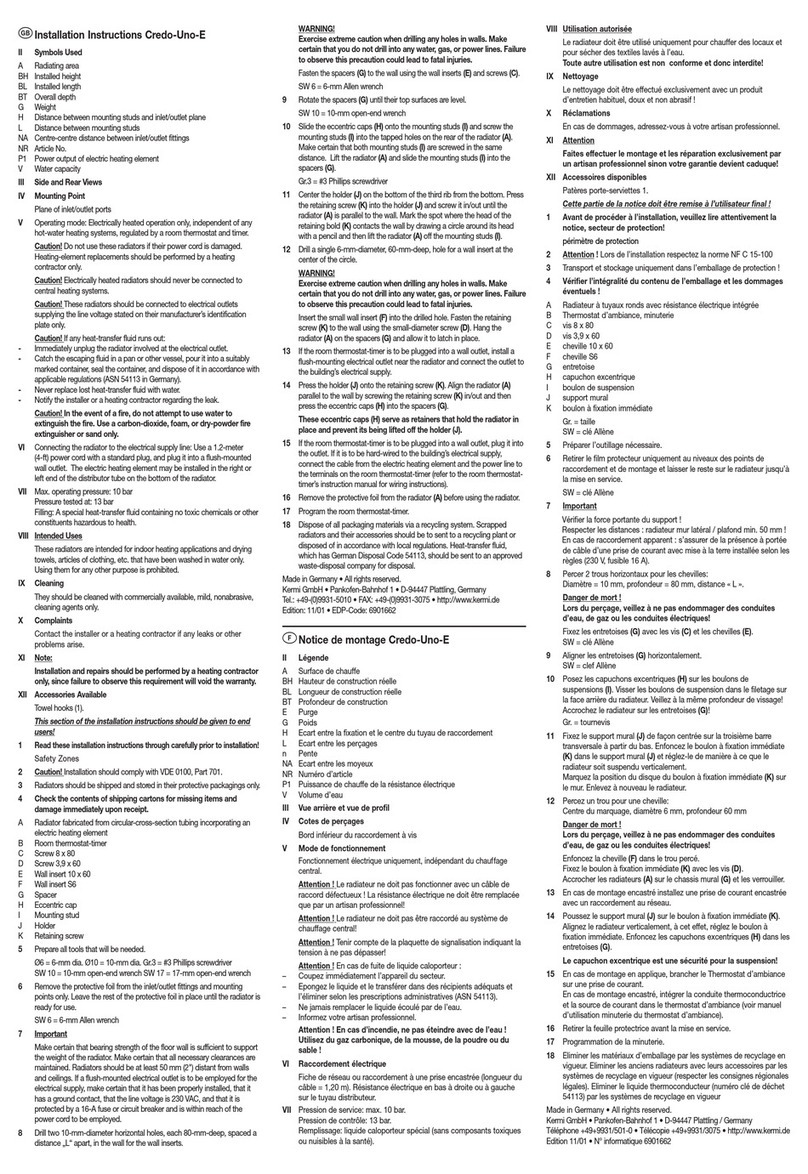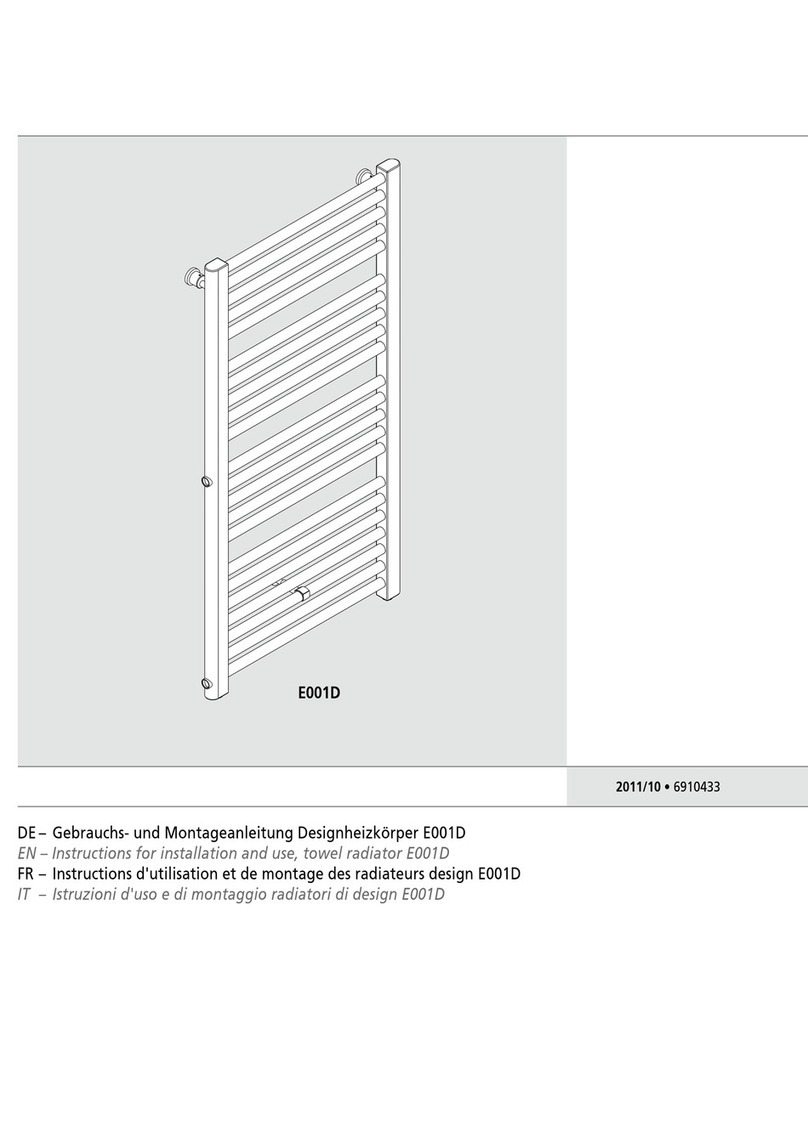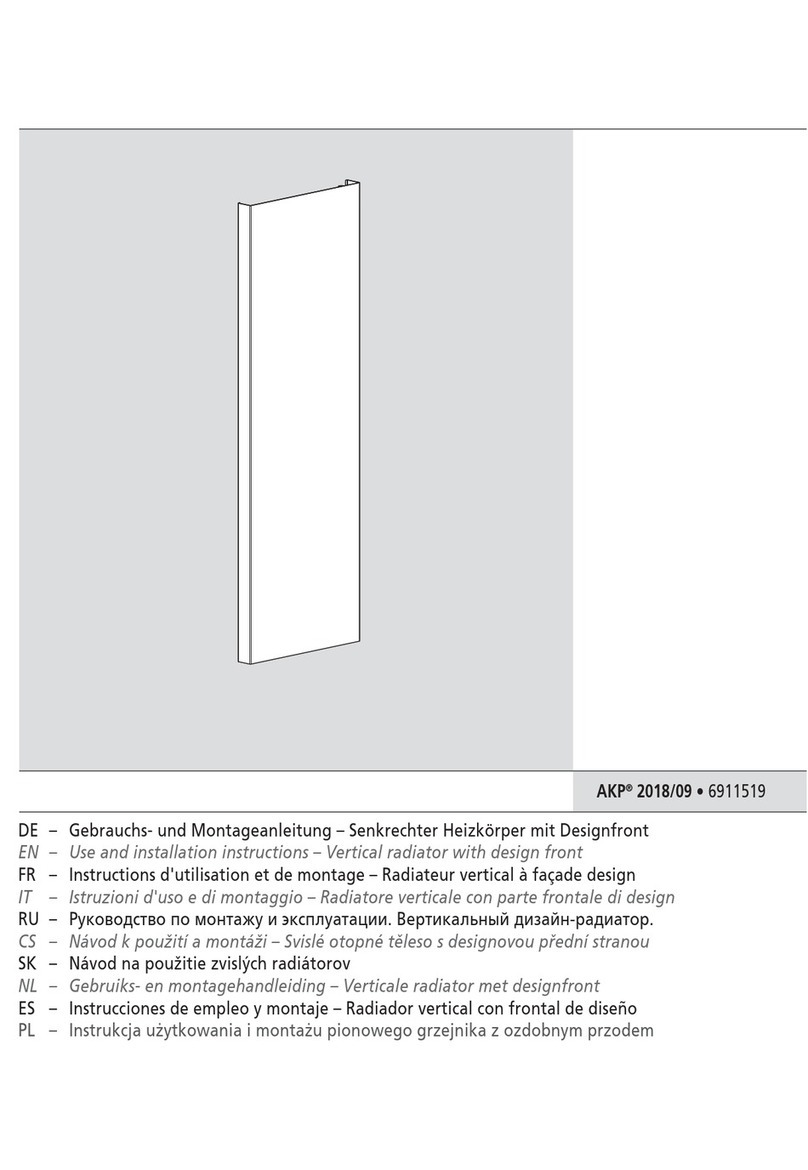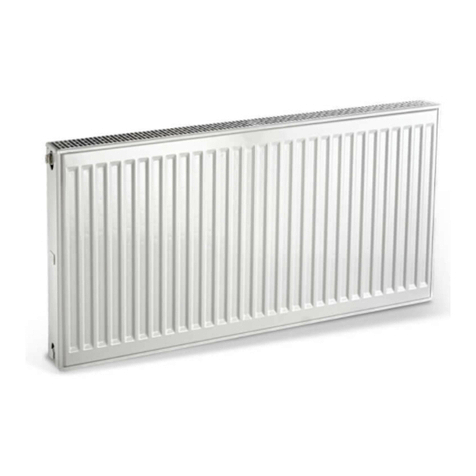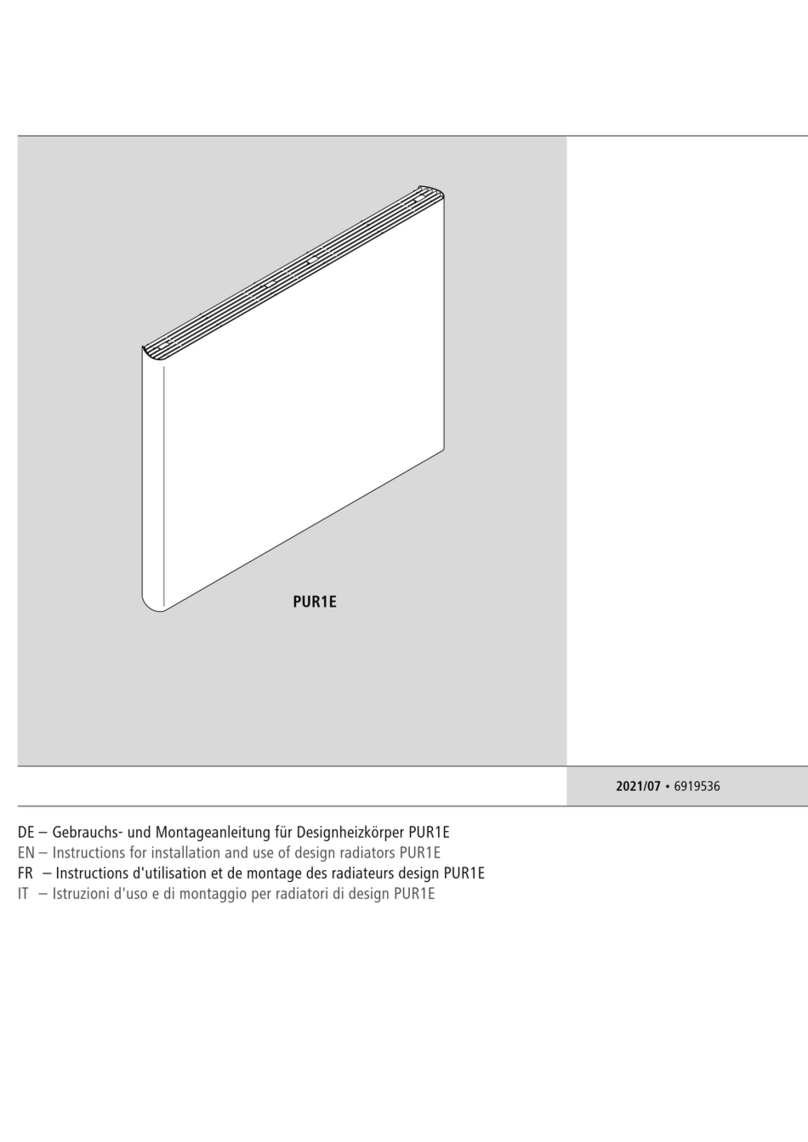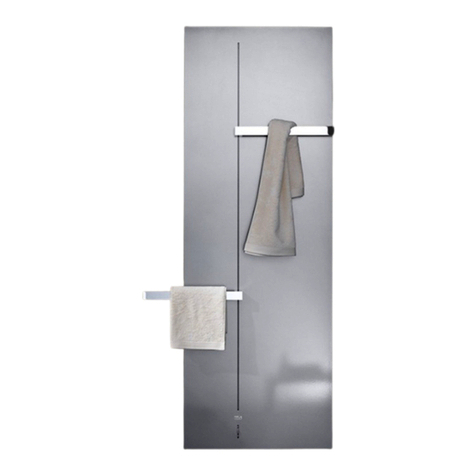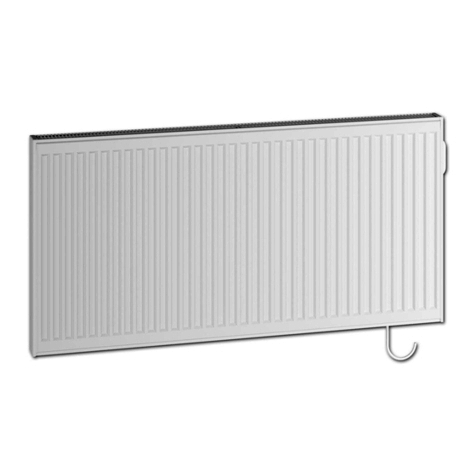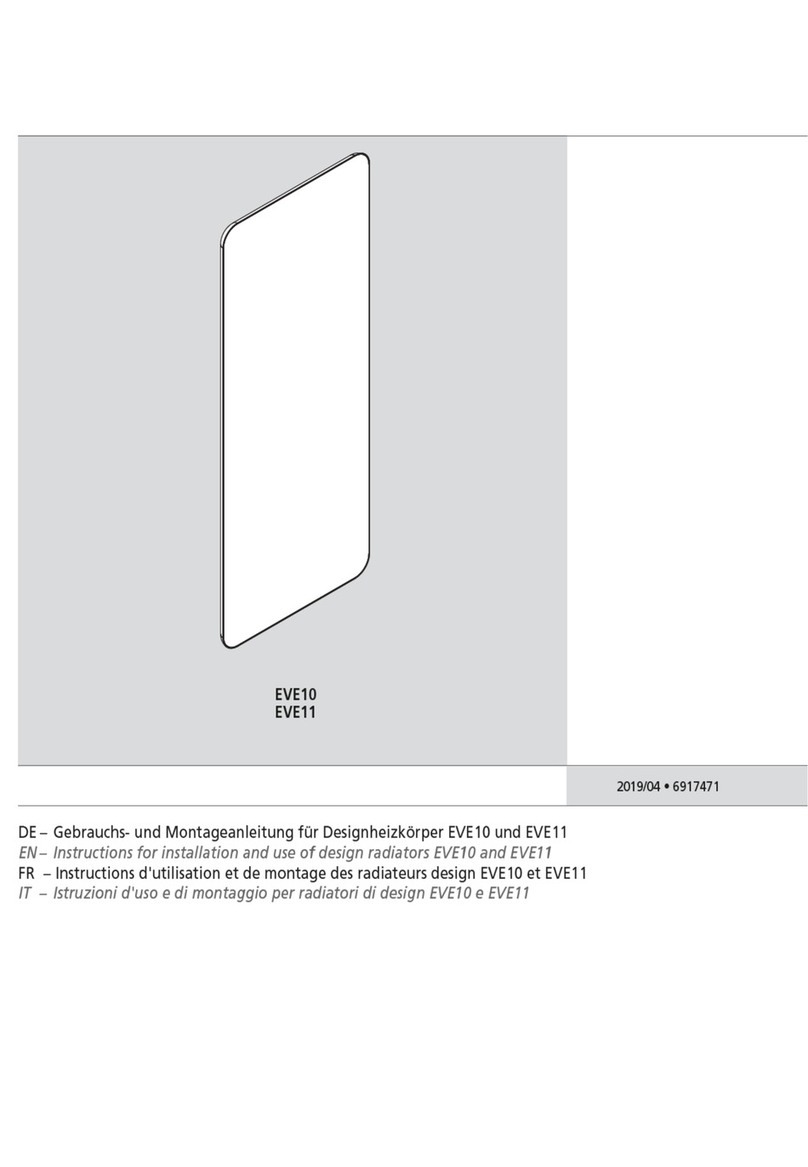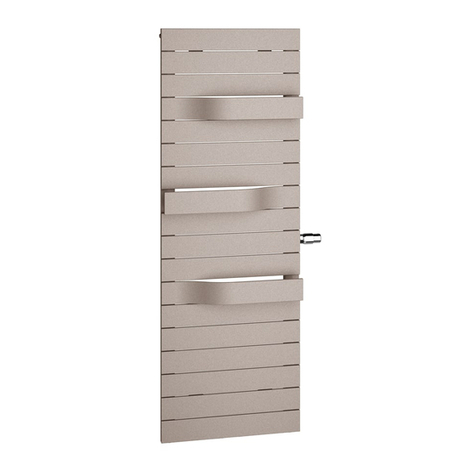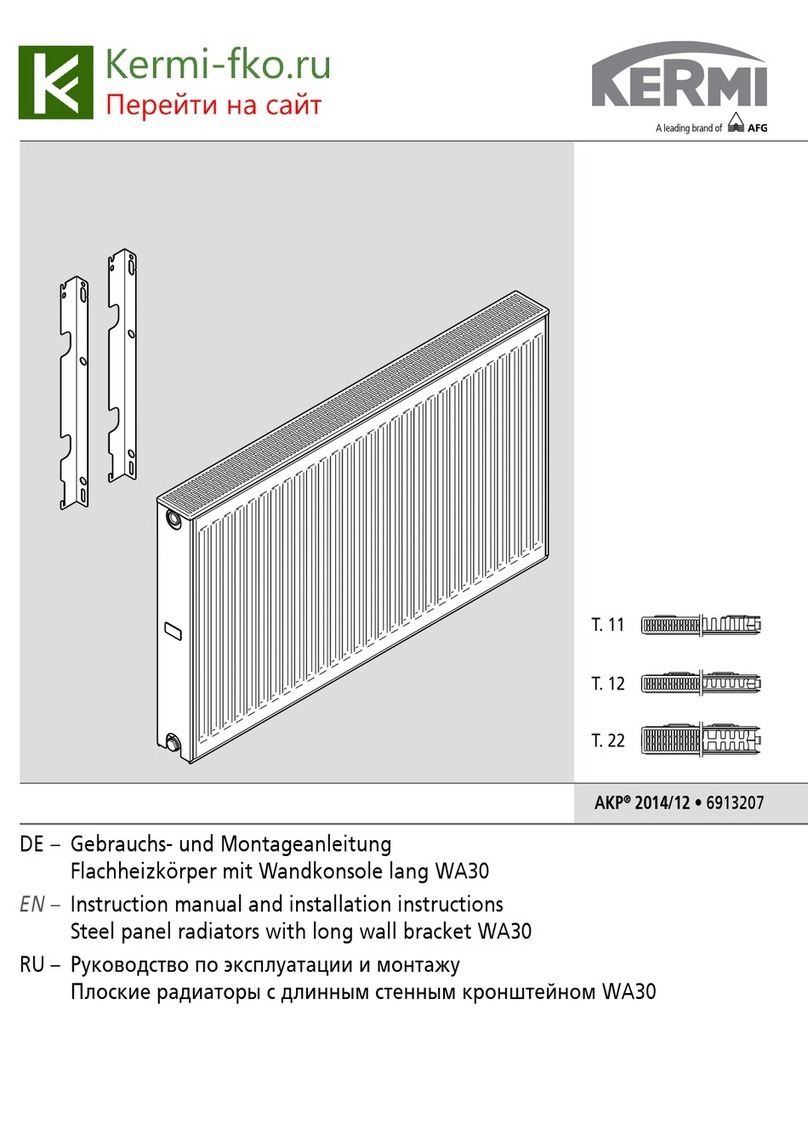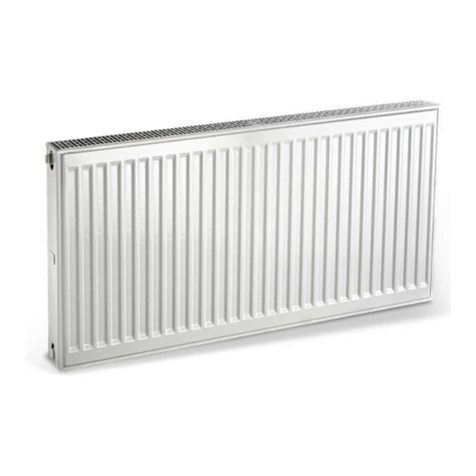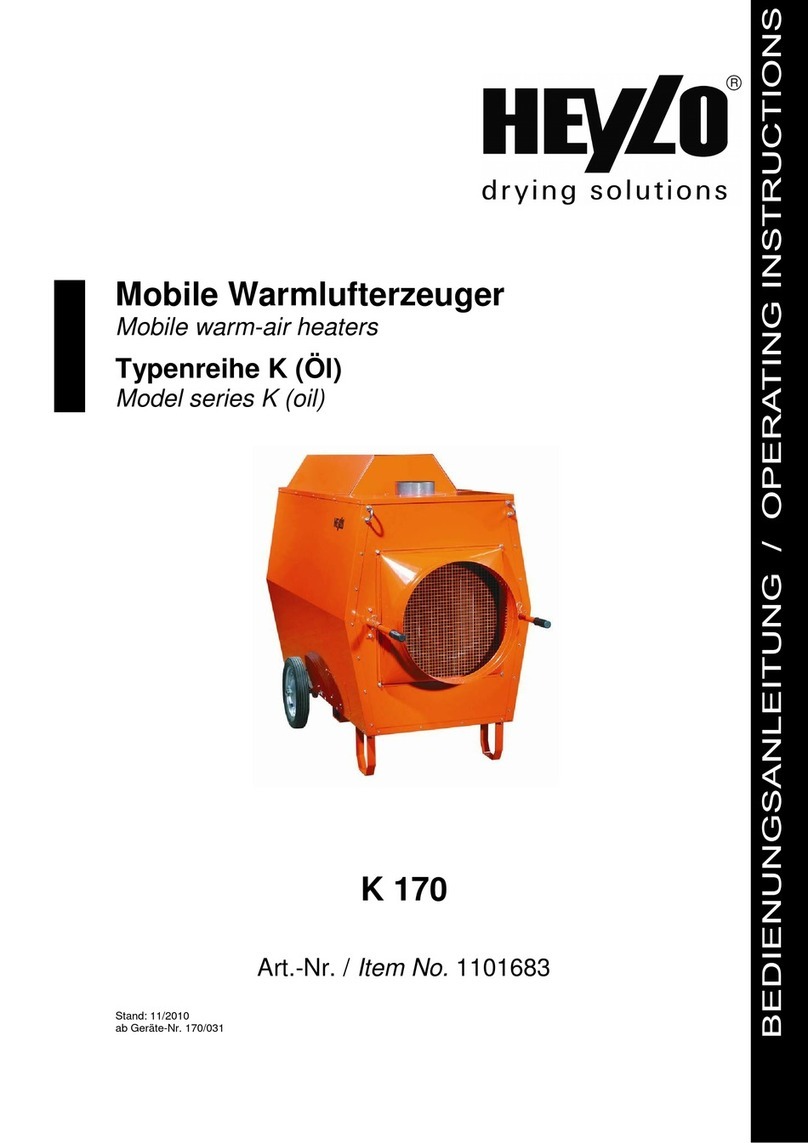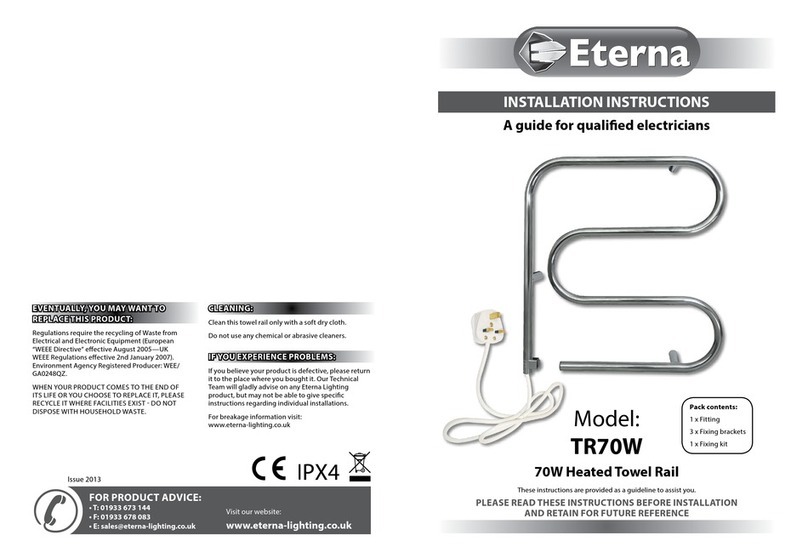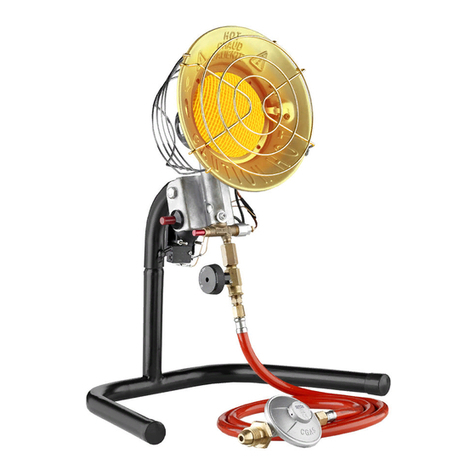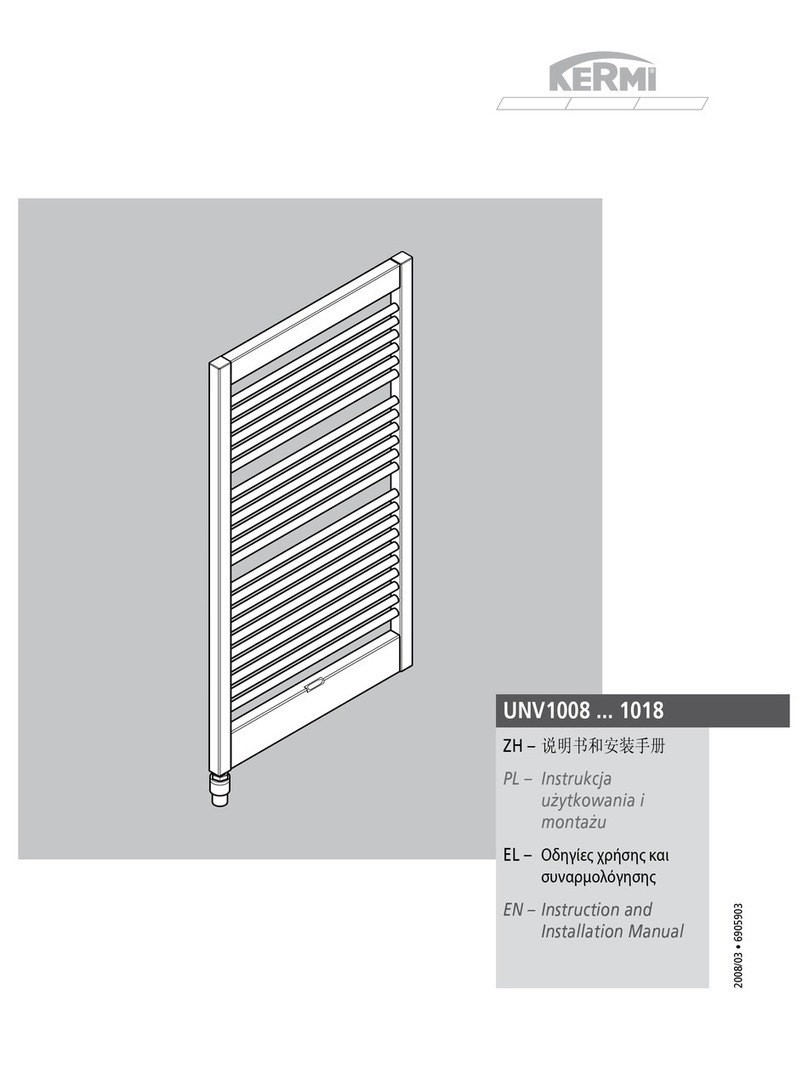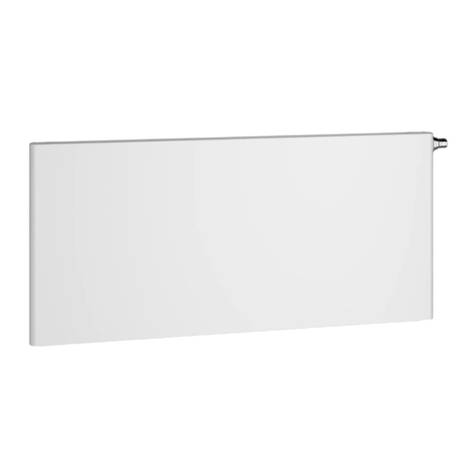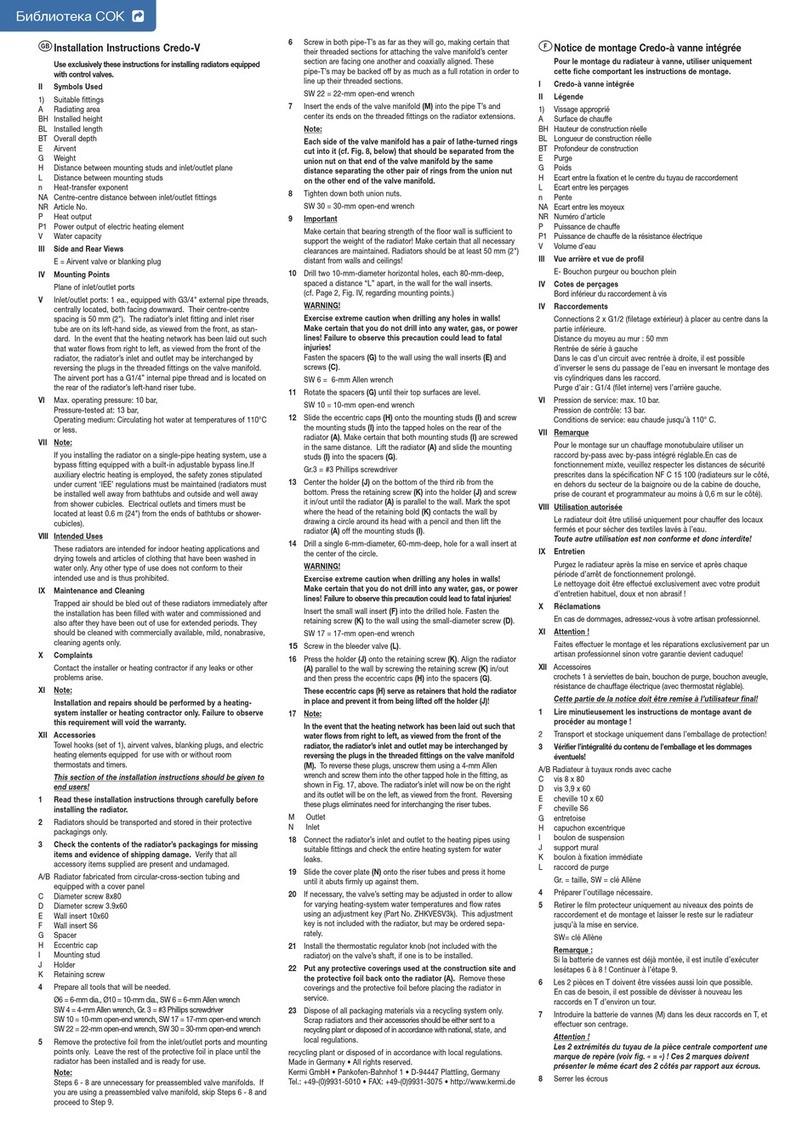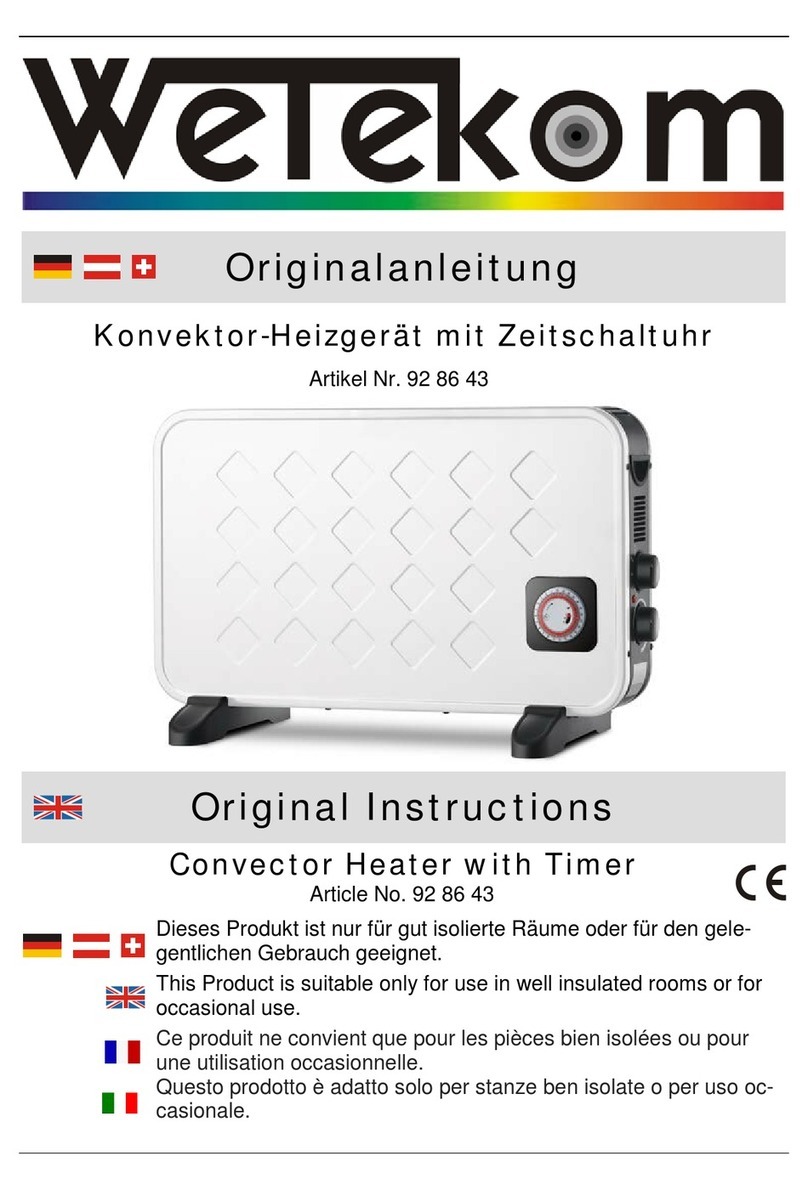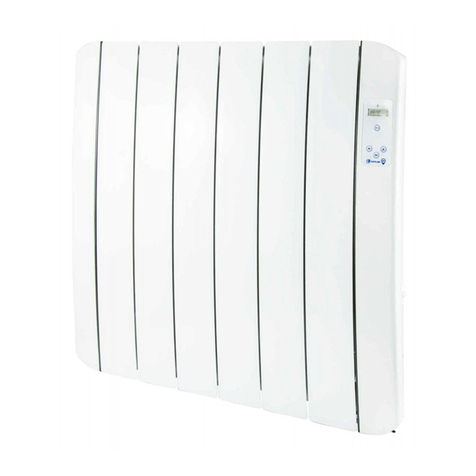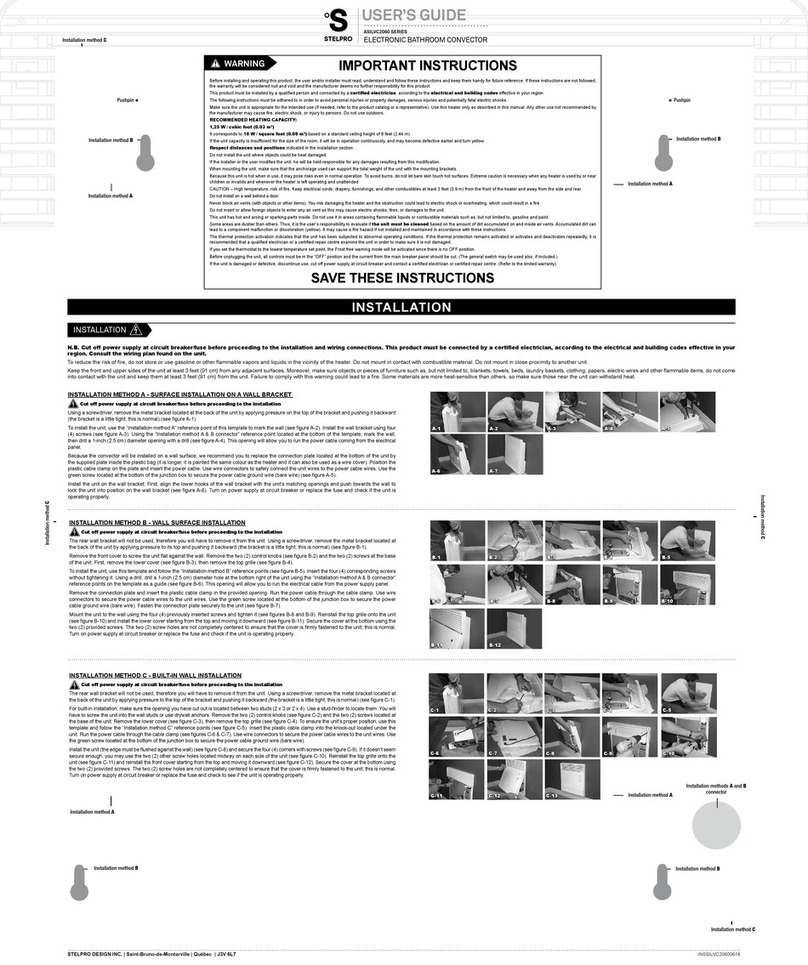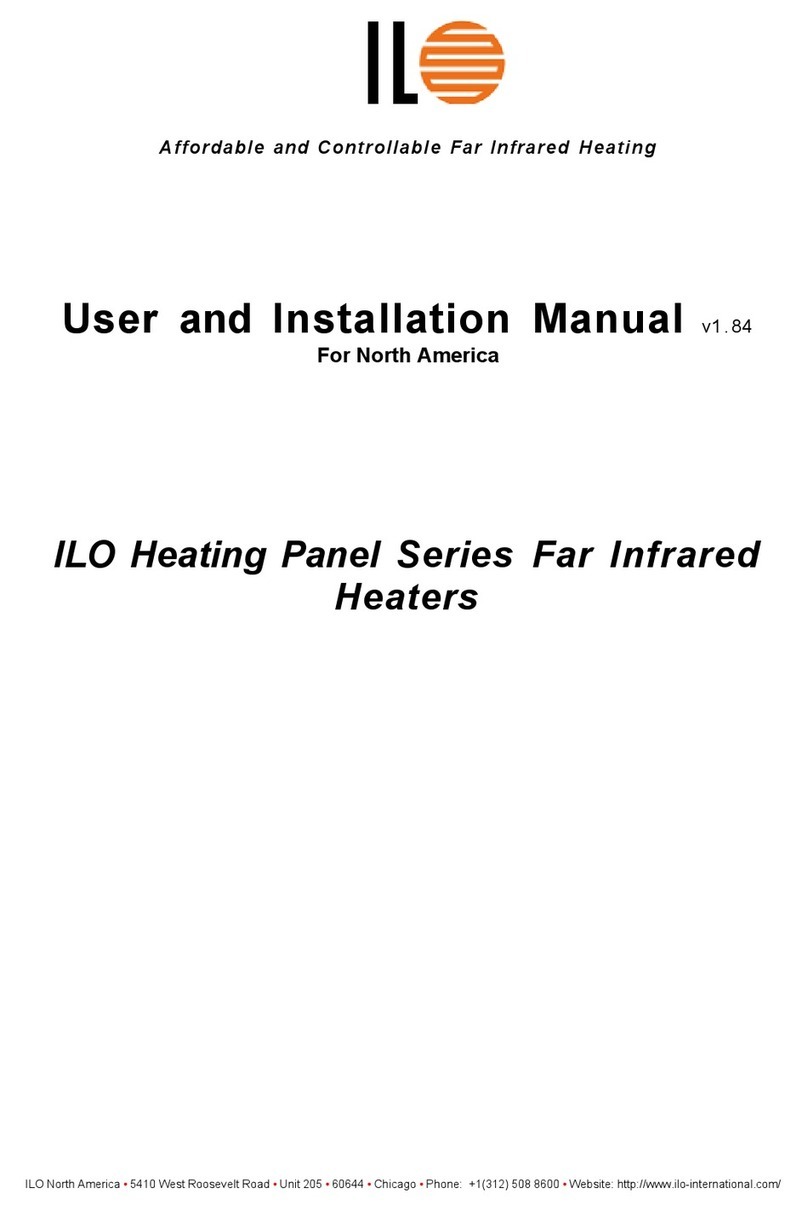3
Heizkörper nicht an das Heizungssystem
anschließen.
Heizstab nur mit der zugelassenen Span-
nung betreiben (siehe Typenschild).
Einsatzgrenzen in Feuchträumen gemäß
DIN 55900 "Beschichtungen für Raumheiz-
körper" beachten.
Heizkörper nur in der Schutzverpackung
lagern und transportieren.
Mindestabstände zwischen Heizkörper und
umgebenden Teilen für Luftzirkulation be-
achten: 50 mm.
Reklamation
An den Lieferanten wenden.
Entsorgung
Verpackung und nicht benötigte Teile dem
Recycling oder der ordnungsgemäßen
Entsorgung zuführen. Die örtlichen Vor-
schriften beachten.
Technische Merkmale
Elektrischer Anschluss:
Heizstab unten rechts oder links im Heiz-
körper montiert
Anschluss über Elektro-Set
Prüfdruck: 7,8 bar
Füllung: Nicht brennbare, ungiftige Wär-
meträgerflüssigkeit
Betriebsart: Elektrobetrieb, unabhängig
vom Heizungssystem, mit Regelung über
Elektro-Set
Montage
Heizkörper mit montiertem Heizstab so abstel-
len, dass das Kabel nicht geknickt oder beschä-
digt wird.
Vorbereitende Tätigkeiten (siehe Abb. 1–5)
Sicherstellen, dass in Kabelreichweite eine
vorschriftsmäßig installierte Gerätedose
(230 V, Absicherung 16 A) vorhanden ist.
Lieferumfang auf Vollständigkeit und Schä-
den prüfen.
Benötigtes Werkzeug bereitlegen.
Schutzverpackung zur Montage nur an den Be-
festigungs- und Anschlusspunkten entfernen.
Lange Befestigungsschrauben in die oberen
Muffen einschrauben und festziehen.
Kurze Befestigungsschrauben in die unteren
Muffen einschrauben und festziehen.
Ggf. im Lieferumfang vorhandene Acces-
soires, z. B. Handtuchstange, montieren
(siehe separate Anleitung).
►
►
►
►
►
►
►
•
–
–
•
•
•
►
►
►
►
►
►
►
Obere Befestigungen montieren (siehe
Abb. 6–9)
Bohrpunkte anzeichnen (siehe Abb. A).
Löcher bohren und Dübel setzen.
An den Wandlagern die Sicherungsschrau-
ben ausschrauben und die Aufnahmen he-
rausziehen.
Wandlager mit Innensechskant-Schrauben
anschrauben. Dabei auf die Lage der Boh-
rung achten.
Aufnahmen in die Wandlager einsetzen.
Dabei auf die Lage der Öffnungen achten.
Aufnahmen mit den Sicherungsschrauben
nur handfest anschrauben. So können die
Aufnahmen zum Ausrichten noch verscho-
ben werden.
Untere Abstandhalter vormontieren (siehe
Abb. 10–11)
Mit einem Messer die beiden Aufschnapp-
bolzen an der zweiten Markierung auf das
Maß 49 mm kürzen.
Beide Abstandhalter am Heizkörper mon-
tieren.
Heizkörper einhängen und ausrichten (siehe
Abb. 12–15)
Heizkörper über die Schrauben in die Auf-
nahmen einhängen. Dabei darauf achten,
dass der Heizkörper einrastet.
Um den Heizkörper seitlich auszurichten:
Aufnahmen verschieben.
Um den Wandabstand einzustellen: Auf-
nahmen herausziehen oder hineindrücken.
Um die Höhe einzustellen: An der Aufnah-
me die Einstellschraube drehen.
Untere Abstandhalter montieren und Heizkör-
per befestigen (siehe Abb. 16–27)
Untere Abstandhalter so weit herausdre-
hen, bis diese an der Wand aufliegen und
der Heizkörper gerade hängt.
Obere Sicherungsschrauben fest anziehen.
Untere Bohrlöcher für die Abstandhalter
markieren.
Sicherungsbügel nach hinten drücken und
Heizkörper aushängen. Heizkörper mit
montiertem Heizstab so abstellen, dass das
Kabel nicht geknickt oder beschädigt wird.
An den unteren Markierungen die Löcher
bohren und Dübel setzen.
Beide Abstandhalter demontieren.
Beide Aufschnappbolzen festschrauben.
►
►
►
►
►
►
►
►
►
►
►
►
►
►
►
►
►
►
►
